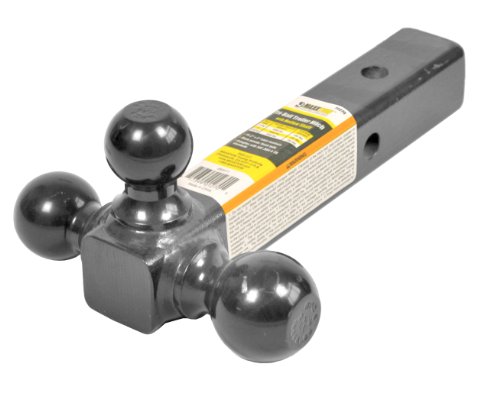The 7 Best RV Trailer Hitches (Reviews For 2025)
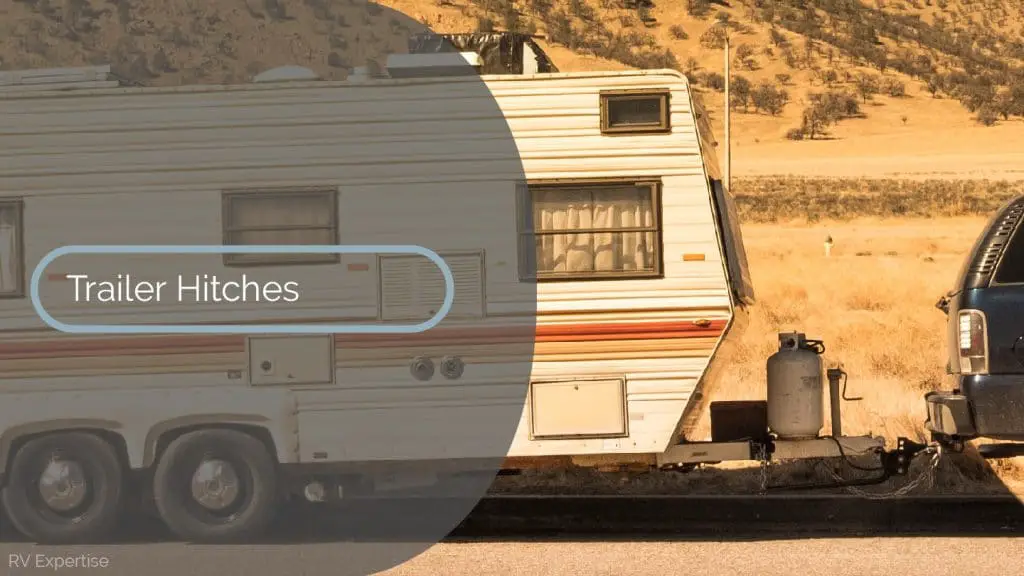
Looking for the RV trailer hitch to ensure you can carry more load? Depending on the size, you’ll be able to transport up to an extra 20,000lbs, ensuring you can take more on your trips. From Class I hitches to Commercial Duty hitches, there’s a size strong enough to suit your needs.
Ultimately, a trailer hitch, aka tow hitch, helps you hitch up a trailer to your vehicle, allowing you to easily carry that extra load wherever you please. Of course, there are many different brands, and sizes on the market. And they have different features, that should be used for different scenarios.
So which trailer hitch to get? From ball mount hitches, Gooseneck Hitches, to Fifth Wheel hitches, we have put together a review of the top RV trailer Hitches on the market to suit all budgets.
RVExpertise.com is reader-supported. When you buy through the links on our site, we may earn an affiliate commission. Visit our disclaimer page for more information.
Best Trailer Hitches For RVs
| CURT Adjustable Trailer Hitch Ball Mount | B&W Tow and Stow Magnum Receiver Hitch Ball Mount | EAZ LIFT Elite Kit Anti-Sway Trailer Hitch |
|---|---|---|
 | ||
 | 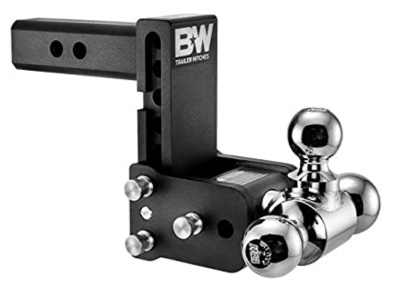 |  |
| 2-inch ball capacity 10,000 lbs | 10,000 lbs with 2" shank | Maximum Tongue Weight: 1,200 lbs |
| 2-5/16-inch ball capacity 14,000 lbs | 14,500 lbs with 2 1/2" shank | Maximum Gross Weight 12,000 lbs |
| 6-inch drop or 5-1/4-inch rise | 21,000 lbs with 3" shank | Includes weight distributing hitch, sway control, 2 5/16-inch hitch ball |
| Works with class 3, class 4 and class 5 hitches | 5" Drop | All mounting hardware included |
Quick Answer: The 7 Best Rated RV Trailer Hitches For 2025
- CURT 45900 Adjustable Trailer Hitch Ball
- B&W Trailer Hitches Tow & Stow Adjustable Trailer Hitch
- Camco Eaz-Lift Elite 1,000lb Weight Distributing Hitch Kit
- CURT 45036 Trailer Hitch Mount
- MaxxHaul 70270 Trailer Hitch Hollow Shaft Triple Ball Mount
- MaxxHaul 70067 Trailer Hitch
- B&W Trailer Hitches Companion Fifth Wheel Hitch
Best RV Trailer Hitch Reviews
1. CURT Adjustable Trailer Hitch Ball Mount
- 2-inch ball capacity 10,000 lbs
- 2-5/16-inch ball capacity 14,000 lbs
- 6-inch drop or 5-1/4-inch rise
- Works with class 3, class 4 and class 5 hitches
We have chosen this product as our best overall trailer hitch because of how supremely versatile it is. The CURT adjustable trailer hitch can be raised by 5.25 inches and dropped by about 6 inches in total. The ball mount is completely adjustable and can be made to adapt any towing scenario.
The anti-rattle feature prevents noise pollution as the hitch smoothly and quietly pulls the trailer around. Meanwhile, the durability and strength of the hitch are promised by its high-quality steel body that will last for years.
Of course there’s more form our best pick. The 2-inch ball can pull a capacity of about 10,000 lbs., while the 2-5/16-inch ball aims for a whopping 14,000 lbs. The ball hitch comes with its own standard shank, which is a perfect fit to any standard hitch receiver. It works well with class three, four, and five hitches.
The product benefits from long-lasting black powder carbide coating and dual ball attachment, which in turn is guarded by a zinc coating. This ensures the tow hitch is weather-resistant and can easily withstand dirt, debris, rain, humidity, and even sunlight.
Bottom Line
Overall, this is a great trailer hitch for a great price. It’s versatile and heavy duty. It does make some noise in some cases, and some people would like it to drop lower, but you’re definitely getting a great product that can pull a variety of trailers.
2. B&W Tow and Stow Magnum Receiver Hitch Ball Mount
- 10,000 lbs with 2″ shank
- 14,500 lbs with 2 1/2″ shank
- 21,000 lbs with 3″ shank
-
5″ Drop
The B&W tow and stow magnum receiver hitch has tri-balls, measuring 1-7/8 inches by 2 inches by 2-5/16 inches. The hitch provides a total drop of 5 inches from the top of the shank to the bottom of the ball.
The hitch fits a standard receiver of 2 inches easily, and the balls can be easily rotated to the desired size. This prevents the need for multiple ball mounts.
In addition, the unit can tow about 10,000 lbs. and the tongue weight capacity is about 1000 lbs.
Bottom Line
Overall, it’s a great trailer hitch that offers versatility and durability. The only downside is that it’s easy to remove, which could put your parts at risk. For this, you may need to purchase an extra lock to keep it guarded.
3. EAZ LIFT Elite Kit Anti-Sway Trailer Hitch
- Maximum Tongue Weight: 1,200 lbs
- Maximum Gross Weight 12,000 lbs
- Includes weight distributing hitch, sway control, 2 5/16-inch hitch ball
- All mounting hardware included
EAZ lift 45058 Elite Kit is made to enable a smooth ride while you hitch a trailer. The bars are interchangeable, which enables positive latching action and smooth conveyance.
The kit includes a 1000 pound weight distribution hitch and swaying control, and a 2-5/16 inch hitch ball. The hitch ball and sway control are ready to use as they come pre-installed.
The torque is also adjusted to the specification of the adjustable ball mount. The pre-installed materials also include U-bolts and a chain package, which are located on the spring bars.
This trailer hitch can pull a maximum weight of 10,000 pounds. All of the hardware necessary for mounting is included in the kit, which includes: spring bars, chains, hookup brackets, 2-5/16″ hitch ball and ball mount, bolt package for adjustable hitches, clip, and shank hitch pin.
Bottom Line
Overall, this is a durable trailer hitch that distributes weight well, and with the anti-sway feature it makes towing a trailer easier. However, some reviews say it’s somewhat noisy, so an anti-rattle device may be needed.
4. CURT Trailer Hitch Ball Mount with 2-Inch Trailer Ball & Hitch Pin
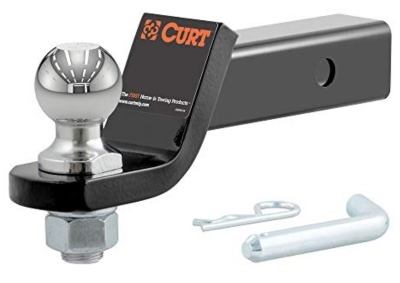
- 7,500 pounds gross trailer weight
- 750 pounds tongue weight
- 2-inch drop
- Includes a 2″ trailer ball
This tool can easily tow trailers that up to 7500 lbs. The hitch has a tongue weight capacity of about 750 lbs, and it’s made from welded steel and has a hollow shank. The hitch ball comes with a 2-inch ball and 2-inch shank, both of which fit easily into any standard receiver.
The mount offers a 2-inch drop in total, and a pre-attached tow ball enables easy ready coupling, and the hitch pin secures the mounting to the hitch receiver.
To increase durability, the ball hitch has a long-lasting black carbide powder coating, while the trailer ball has a chromium plating for corrosion resistance.
The trailer tow hitch is easy to install as the ball mount simply needs to be inserted into the shank of the 2-inch receiver. Plus, the pre-torqued trailer ball promises the easiest possible coupling.
Bottom Line
All in all, a great product that many people have been very pleased with, especially the ease of installation and how well it fits and tows.
5. MaxxHaul 70270 Triple Ball Mount
- Hitch ball sizes: 1-7/8 inch; 2 inch; 2-5/16 inch
- Weight rating 2000/5000/7500 pounds
- 2 inch receiver size
- 10 inches long
MaxxHaul 702720 trailer hitch is a triple ball mount with a hollow shaft. The hitch ball sizes are 1-7/8 inch, 2 inch, and 2-5/16 inches. The receiver size is 2 inches while the total length is 10 inches.
The tri-ball mount is designed to fit any standard class 3 and class 4 hitch receivers. Each of the three balls has a stamp to indicate its size clearly. A black carbide powder coating prevents rusting and corrosion of these parts, protecting it from the elements of nature.
The tow hitch is made out of heavy-duty steel, which makes it durable and long-lasting. The two-by-two inch shaft is attached to the three welded steel balls. The tool fits the SAE standards which means that the capacities of each ball are as follows: 1-7/8″ – 2000 lbs, 2″ – 5000 lbs, 2-5/16″ – 7500 lbs.
Bottom Line
This product has both pros and cons. However, it is definitely a neat tri-ball design and can help you tow multiple trailers with varying weight capacities in one go or separately.
6. MaxxHaul 70067 8-Position Adjustable Ball Mount
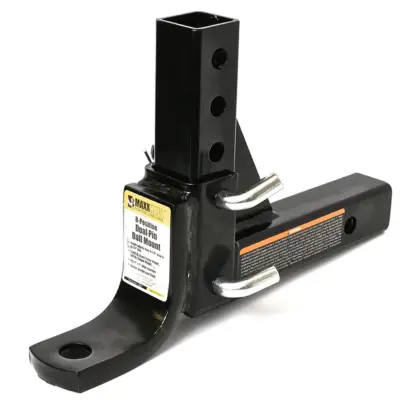
- 5000 pound weight rating
- 5, 7, 9, or 11-inch drop configurations
- 4, 6, 8, or 10-inch rise options
- Maximum tongue weight 500 lbs
The MaxxHaul 70067 is an 8 position, adjustable ball mount. The unit can easily fit standard class 3 and class 4 hitch receivers no problem. The tool has an adjustable drop at 5 inches, 6-½ inches, 8 inches, and 9-½ inches. It has an adjustable rise at 3-¾ inches, 5-¼ inches, 6-¾ inches, and 8-¼ inches.
The trailer hitch has been designed to provide the maximum possible flexibility when adjusting the towing height. The maximum gross trailer weight that this hitch can pull is 5000 pounds in total.
MaxxHaul 70067 has been designed specifically to meet all SAE standards, which makes it versatile and user-friendly. The entire body is made out of high-quality steel, and a heavy duty carbide black powder finishing gives the tool the added strength and durability it needs. It also prevents rusting and corrosion, and the total shank length is 10-¾ inches.
Bottom Line
A fair product in all, depending on what you want to use it for. It’s suitable for medium weight carrying capacity trailers and helps raise the towing vehicle a little higher than usual, which may be something that attracts you.
7. B&W RVK3500 5th Wheel Trailer Hitch:

- 20,000 lb GTW
- 5,000 lb VTW
- Hydraulic shock absorber
- Made in America
B&W Companion RVK3500 is a fifth wheel hitch, which boasts a fully movable head that can turn from front to back and from side to side easily.
A cam action latching handle has been placed to easily release the trailer from the hitch whenever required or when unloading needs to be done.
The bushings are polyurethane, which helps prevent noise pollution, so you’ll be able to tow a large trailer without any annoying rattling sounds.
The device also has 3 vertical adjustments that range from 16.25 – 18.25 inches. Also, there’s a 4-inch front to back adjustment with three coupler positions. The gross trailer weight is 20,000 pounds, and the product comes with limited lifetime coverage.
Bottom Line
This is quite possibly the best 5th wheel hitch on the market. This product literally has no downsides except that it is so solid and sturdy, it’s difficult to lift alone. Apart from this, it’s not only extremely durable, it works as promised and also comes with limited lifetime coverage.
Buyer’s Guide For RV Trailer Hitches
Now you’ve reviewed what we believe to be the best trailer hitches on the market, it’s time for our comprehensive Buyer’s Guide. here you’ll learn exactly what one is and how a trailer hitch works. We discuss the different sizes, and what makes a good quality trailer hitch stand out above the others.
We also discuss the different types, such as Gooseneck hitches, fifth wheel hitches and front mount ones. We also offer guides on how best to maintain a hitch, installing one and how to remove one. All tricky for first timers.
If by the end of the article you still have some unanswered questions, fear not as we have included an FAQ section dedicated to all things trailer hitches. happy reading!
What is a Trailer Hitch?
A trailer hitch is a tool used to connect any vehicle with a trailer to help you carry extra load or increase capacity. A trailer hitch, also known as a tow hitch, is essentially a device that’s attached to the chassis of a vehicle for towing around extra objects that won’t fit in your car or truck.
How a Trailer Hitch Works
A trailer hitch is a device used to connect a tow vehicle and a trailer. It’s bolted onto the vehicle, which then provides a coupling point for you to hook the trailer onto.
Once the trailer hitch has been installed, it helps to expand your vehicle’s versatility, meaning you can use it to pull extra loads, including extra cargo.

What Size Trailer Hitch Do I Need?
Trailer hitches have 5 classes listed from I to V, according to their size. These range from the lowest weight capacity to the highest, respectively. There are Xtra Duty and Commercial Duty hitches, too, but for a trailer, you would only need Class I-V.
Class I
The receiver tube size is 1.25 inches, the gross trailer weight that it can tow is 2,000 lbs, and the tongue weight capacity is 200 lbs.
Class II
The receiver tube size is 1.25 inches, the gross trailer weight that it can tow is 3,500 lbs, and the tongue weight capacity is 350 lbs.
Class III
The receiver tube size is 2 inches, the gross trailer weight that it can tow is between 3,500-6,000 lbs, and the tongue weight capacity is between 350-600 lbs.
Class IV
The receiver tube size is 2 inches, the gross trailer weight that it can tow is between 6,000-10,000 lbs., and the tongue weight capacity is between 600-1000 lbs.
Class V
The receiver tube size is 2.5 inches, the gross trailer weight that it can tow is over 10,000 lbs., and the tongue weight capacity is between 1000-1200 lbs.
What Makes a Great Trailer Hitch?
In order to pick a tow hitch that’s best compatible with your vehicle and one that functions the best, you need to know what features to look for. So, let’s dive into these features:
Weight Carrying Capacity
To ensure your hitch stays intact and bears the weight of the trailer being pulled behind your vehicle, it’s necessary for you to look at the gross trailer weight that your hitch can pull. Also, the tongue weight capacity is another thing you need to take into consideration.
Ball Mount Size
The correct ball mount size allows a good fit of the shank with the receiver tube. This is necessary as the correct ball mount size helps make up the difference created due to the receiver tube being higher than the trailer coupler.
Coupler Size
Another necessary feature is the coupler size. The coupler should be properly compatible with the ball mount, otherwise the hitch will make for a poor connection between your trailer and vehicle.
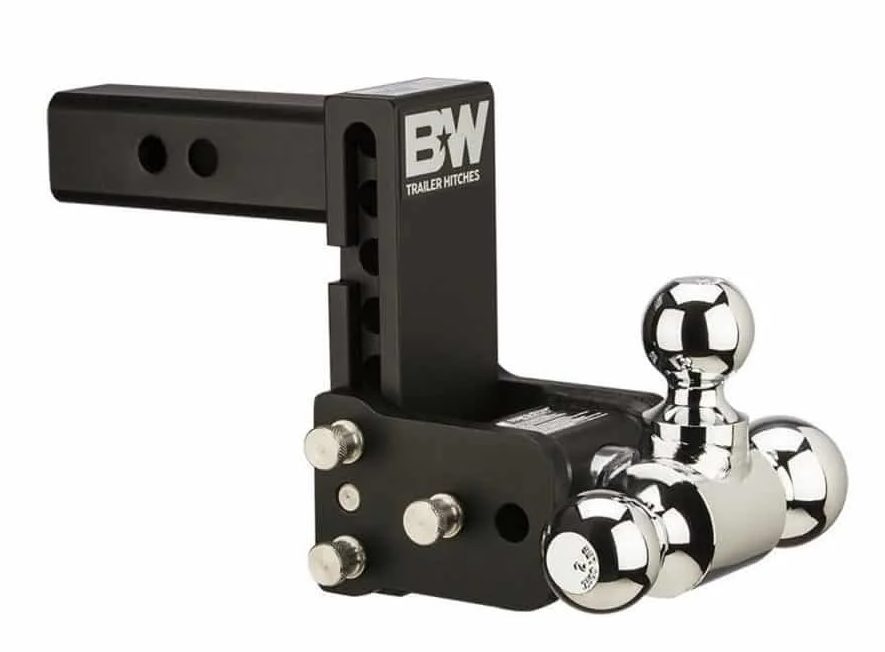
Types of Trailer Hitches
Now that we have taken a good look at some of the best trailer hitches available, let’s look further into the different types of hitches there are.
Weight Carrying Hitches
These are used with lighter trailers that weigh up to 3500 pounds.
Weight Distribution Hitches
These hitches help distribute the weight evenly between the trailer and vehicle.
Fifth Wheel Hitches
These are unique and special types of hitches, as they’re installed into truck beds and are used to tow heavy-duty vehicles like RVs.
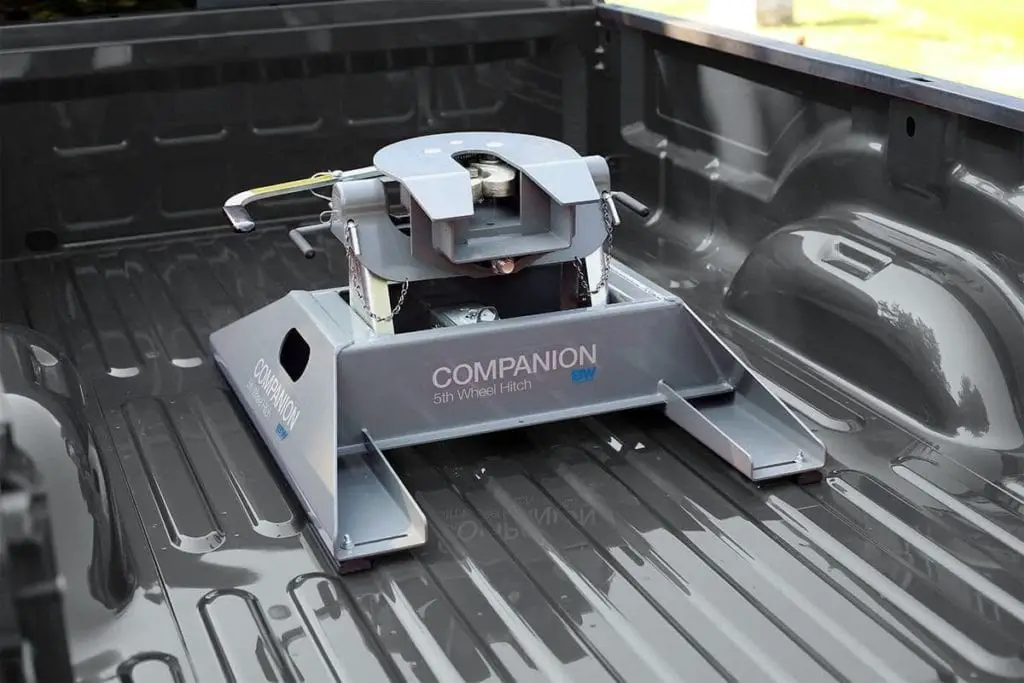
Gooseneck Trailer Hitches
There are very similar to a 5th wheel hitch in that it mounts in the bed of the truck directly above or slightly in front of the rear axles. They’re also used to tow heavier trailers thanks to the hitch ball and coupler, which lock into place securely.
Front Mount Hitch
They’re used when using a winch.
Specialty Hitch
These include other hitch types such as ATVs and other automobiles.
Class 2 vs. Class 3 Trailer Hitch – Comparison Overview
If you’re thinking of buying a trailer hitch for your vehicle, you should know there are different classes of trailer hitches available. So, which one should you get? Here’s a comparison between the 2 most popular: class 2 and class 3 trailer hitches. You can go through them and see which one would be more suited for your vehicle and your towing needs.
Differences
- The main difference between a class 2 and class 3 hitch is that the former has a 1-1/4″ receiver, whereas the latter has a 2″ receiver.
- A Class 2 hitch is capable of hauling up to 3,500 lbs gross trailer weight, whereas a Class 3 hitch can be used to haul up to 8,000 lbs gross trailer weight. Also, some specific Class 3 hitches can be used along with a weight-distribution hitch to help tow about 12,000 lbs.
- Class 2 hitches are more common as they can haul about 3,500 lbs., which is about the same maximum rating as most SUVs. Whereas, Class 3 hitches are more popular among truck owners and drivers.
Similarities
- Both Class 2 and Class 3 trailer hitches can be used with a variety of vehicles, including SUVs and pickup trucks.
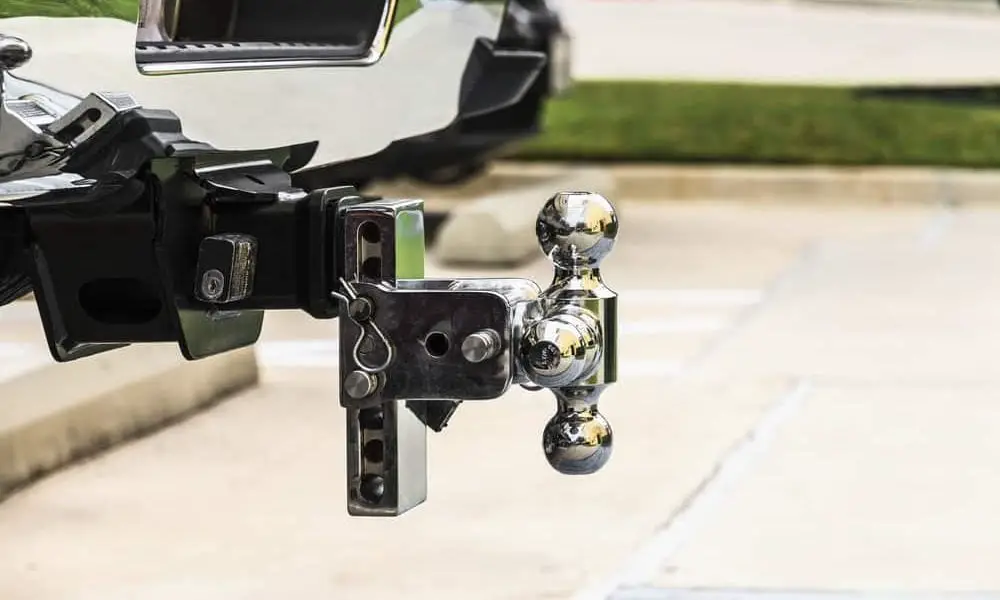
Tips for Maintaining Your Trailer Hitch
Using a trailer hitch has a lot of advantages, but the difference in weight distribution and the vehicle’s overall dynamics, you need to maintain it regularly. Following are some proper care and maintenance steps that you should follow.
- The first main step is to make sure that you’re using your trailer hitch with the appropriate vehicle. Check your truck’s gross vehicle weight rating and make sure it’s at least ten percent more than that of the trailer and trailer tongue weight combined. This is to make sure that the trailer won’t overpower your vehicle.
- Check the truck bed and measure its length. Remember that you need space in the front of the hitch to make sure the trailer doesn’t hit the truck cab’s back window.
- You need to be aware of your trailer hitch. See that you regularly inspect it and re-lube it. Before you hook it up to your vehicle, make sure to check it for any damaged or missing parts.
- Check the torque every single time you’re leaving for a trip. Make sure to tighten all of the nuts and bolts to prevent your vehicle from detaching during the trip. And in case the vehicle does detach, then make sure the breakaway cable and the lock are functional.
- Inspect your trailer’s brake wire. Remove the wheels and thoroughly check and clean the brake pads and drums. In case of any damaged parts, change them.
- Check the suspension, as well as the axles, especially if you’re traveling across the country.
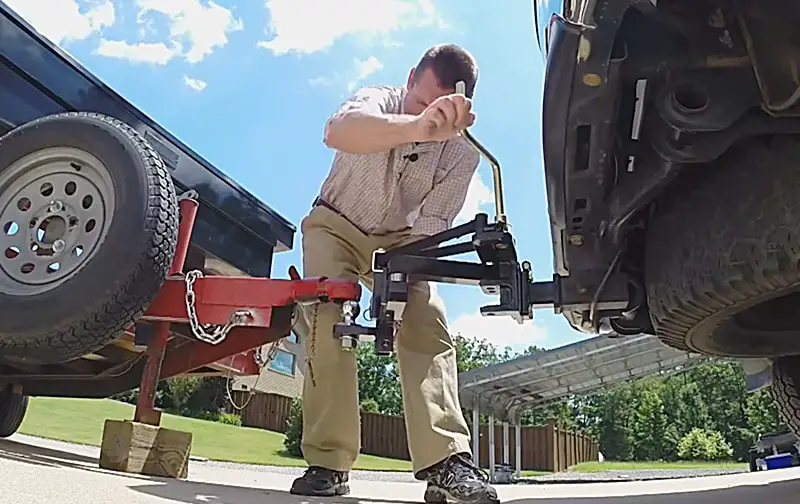
How to Install a Trailer Hitch
Once you’ve invested in a trailer hitch, you might want to know how to install it easily. This step-by-step guide will explain that but first of all let’s look at the tools you’ll need.
- Light or torch
- Socket kit
- Ratchet and ratchet extension
- Swivel Socket
- Working gloves
- Safety goggles
- Torque wrench
- Jack and stands
- Pry bar
- Measuring tape
- Torx bits and carbide drill bits
- Trimming tool
- Screwdrivers
- Painting pen
- Die grinder
- Cutting lubricant
- Box wrench kit
- Power drill
- Chock your car or vehicle’s wheels and jack up your vehicle. Although jacking is not necessary for all vehicles, it still helps you have a better look at where you are supposed to place your hitch. Also, it grants you extra working space. It’s also important to ensure your emergency brakes are activated.
- Look for a suitable place to attach or keep your torch or working lights. Aim them at the correct position so you can maximize the brightness of the area you are working on. It’s also important that you assess the nuts, bolts, screws, and other parts of your vehicle during this process, so it won’t hinder installation further down the line.
3. Some vehicles store a spare tire beneath the back of the vehicle. If your vehicle has one, make sure you remove it beforehand.
4. Take a look at the user manual or instructions that came with the package. Then, remove any nuts, bolts, screws, plugs, or other parts mentioned in the manual that may hinder installation.5. Place the hitch into the correct position and make sure it’s properly aligned. Once you’re sure, install the rest of the hardware that came with it.
6. Secure the hitch tightly into place by first screwing on the nuts then, later on, using torque to tighten the nuts. Also, you may need another person to help lift the device into position.
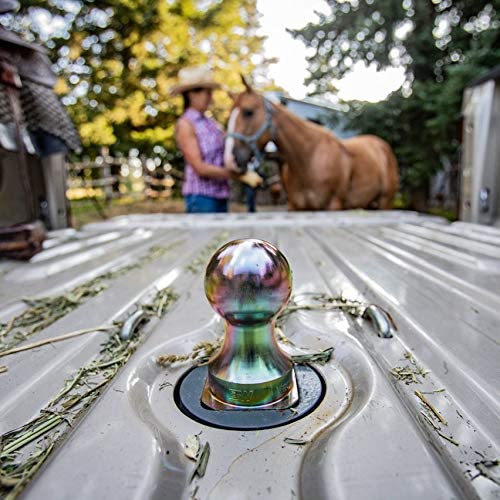
How to Remove a Trailer Hitch
We’ve covered how to install a hitch, but what about removal? We’re here to help! Follow the steps below to easily remove a trailer hitch from your vehicle:
- Turn on the emergency brake in your parked vehicle and jack it up from the rear.
- Use a torch or work light to point out the bolts that are holding up the hitch frame.
- Place another jack, jack stand, or large wooden block under the hitch to help support and carry its weight while you unscrew the bolts.
- Remove the wiring harness and store it back in the vehicle. Loosen the nuts and bolts with a socket wrench and all other parts holding up the frame.
- Use a rubber mallet or hammer to tap the hitch, loosen it, and detach it from the vehicle.
FAQs About RV Trailer Hitches
There are some important things you need to consider before you invest your money in any trailer hitch. Doing so will prevent you from channeling your money into the wrong tow hitch.
What is the towing weight?
When towing a trailer will my vehicle be able to exert enough braking power?
Trailer Brakes: Most trailers, especially those over a certain weight threshold (often 3,000 pounds in many jurisdictions), require their own braking system. This could be electric, hydraulic, or surge brakes. Electric brakes are commonly used and require a brake controller in your tow vehicle.
Brake Controllers: If your trailer has electric brakes, a brake controller is necessary. This device ensures that the trailer’s brakes engage in sync with your vehicle’s, providing balanced braking. There are various types, like time-delayed, proportional, or inertia-based controllers, each designed to manage braking force differently but effectively.
Vehicle Compatibility: Not all vehicles are designed for towing heavy trailers. Check your vehicle’s towing capacity and ensure it’s not just about weight but also about the vehicle’s brake system capacity. Some modern vehicles might have advanced brake systems like brake-by-wire, which can fail if not integrated properly with trailer brakes.
Maintenance and Adjustment: Trailer brakes need regular maintenance, including adjustments. If your brakes feel weak, it might be due to worn-out brake shoes or pads that need replacement or adjustment. Proper adjustment is key; brakes should drag slightly on the drum when properly set.
Overrun (Surge) Brakes: For those without electric setups, surge brakes use the trailer’s momentum to apply brake pressure. While effective, they might not distribute braking force as evenly as electric brakes, potentially leading to less efficient stopping if not set up correctly.
Weight Distribution: Proper weight distribution is vital. Too much weight at the rear of the trailer can cause instability and reduce the effectiveness of your vehicle’s brakes due to less weight over the vehicle’s rear axle, where most of the braking power might come from.
Legal Requirements: Always comply with local laws regarding trailer weights and braking systems. Many areas mandate specific types of brakes or controllers for trailers above certain weights.
How much does a trailer hitch cost?
How to measure trailer hitch drop
Now, in order to measure the trailer hitch height, measure the distance from the ground to the top of the inside of the hitch receiver.
Then measure the distance from the ground to the bottom of your trailer coupler. Subtract the two distances, and the difference between the two will be your trailer hitch drop.
How to Lock a Trailer Hitch
Once you’ve secured the coupler clamp with the hitch pin that’s provided, use safety chains for linking the trailer to the tow vehicle. Make sure that you cross the chains.
How high should a trailer hitch be off the ground?
Usually, a trailer hitch is about 17 inches in height when measured from the ground to the bottom of the coupler. Many hitches are designed to be a similar measurement to this. Therefore, you must make sure your trailer hitch is at least 17 inches above the ground.
What size are most trailer hitches?
How do you secure a trailer hitch?
How do I stop my trailer hitch from rattling?
The piece of cardboard that has been shoved in there probably has fallen and will require a tightening ball mount with a lock. This piece of equipment makes use of a threaded pin that helps by snubbing the drawbar up against the anti-rattle wedge. You’ll then use the lock over the end of your hitch pin to prevent it from being stolen. This will stop the rattling without you needing a new drawbar or receiver.
How do I remove a rusted trailer hitch pin?
Now all you have to do is spray the hitch receiver opening so that the fluid cools the metal. This will make the metal contract, causing the rust seal to break. Then, using an air chisel, knock the hitch to help break the rust. This way, the fluid will penetrate and free the ball mount.
Trailer hitch won’t release from ball, what to do?
Make sure both the vehicles are on level ground to prevent binding. You can also make use of a trailer jack, but if there’s too much weight on the ball, it won’t release. If this is the case, try raising the jack in order to free it.
How do I measure the trailer hitch drop?
1. Find out your hitch height – this is the distance from level ground to the top of the receiver hitch opening.
2. Find out the coupler height – measure the distance from the leveled ground to the bottom of the coupler to receive this measurement.
3. Calculate the difference – calculate this with the formula, hitch height – coupler height to calculate the drop if your hitch height is greater. Do the reverse, coupler height – hitch height, to calculate the rise if your coupler height is greater. Select a ball mount accordingly.
What does V5 mean on a trailer hitch?
What is the difference between a class 2 and class 3 trailer hitch?
How much weight can a class 5 hitch pull?
What is the standard size ball for a trailer hitch?
What is the standard height for a trailer hitch?
All of the reviewed trailer hitches are recommended by us. So, once you know the type and size you need, we’re sure one of the above will satisfy your needs.
Capacity
Ease Of Use
Value
The CURT 45900 Adjustable Trailer Hitch Ball is our Editors Choice for the best RV trailer hitch

Hello, fellow wanderers! I’m Alyssia. Since 2008, my husband and I have called an RV our home, journeying through life one mile at a time. Our nomadic lifestyle has led us to over 70 countries, each with their unique tales that have shaped our own.
I share our stories and insights right here, hoping to inspire and guide you in your own adventures. Expect tips on RV living, our favorite camping spots, breathtaking hiking trails, and the joys and challenges of an ever-changing view from our window. Alongside, you’ll also find practical advice on outdoorsy stuff, designed to equip you for any journey. Join us as we continue to explore the vast, beautiful world on wheels!
